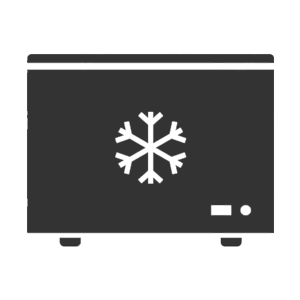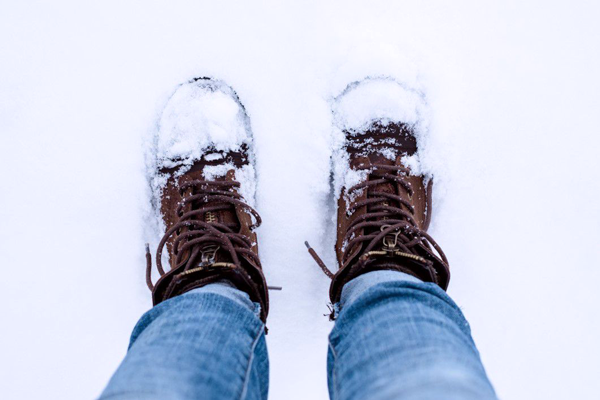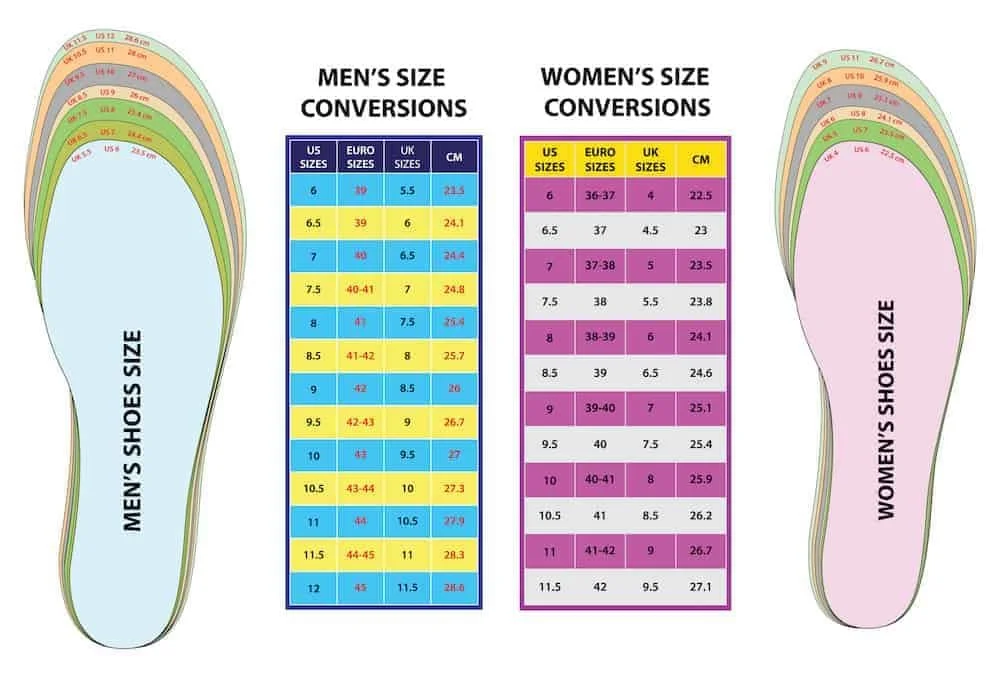Best Freezer Warehouse Boots
Freezer warehouse boot recommendations from a freezer worker!
Working in a freezer warehouse is extremely taxing on the human body.
Not only must you life, stack, organize, and wrap thousands of boxes of each day, you also must walk 10 miles a day in sub zero temperatures.
How do I know? I’m a freezer warehouse selector. I work 10-12 hour shifts in a -20°F environment.
In this post, you’ll learn about what freezer boots are best for the job and important specifications and features to consider before purchasing your pair.
Best Extreme Cold Weather Boots
Below you’ll find my recommendations for the best freezer boots on almost any budget.
The recommendations are sorted by use and price from low to high.
Best Freezer Boots:
Budget: Bogs Workman
Value: Refrigiwear Extreme Freezer
Best: Baffin Derrick Boots
Best Freezer Boots
The best freezer boots have similar requirements to extreme cold hiking boots.
They need to have thick rubber soles, plenty of insulation, soft and comfortable uppers, and thick, insulated insoles to help prevent heat loss.
However, unlike hiking boots, a fast lacing system is less important, as you can put your boots on before arriving at work, or in a warm space before entering the freezer.
Unique to freezer boots is the requirement of a composite toe, as is mandated in all warehouse environments.
It’s important to note that you do not want a steel toe. In frigid environments, the metal plate will sap warmth from your feet, causing you to feel cold.
Best Budget Freezer (-72°F)
The Bogs Workman composite toe winter boot is a good option for freezer workers on a budget.
Comfort rated down to -72°F, with all the walking you do on the job, you can trust that temperature rating.
Their seamless construction means they are 100% waterproof, though you’re unlikely to encounter any liquids while on the job. However, this type of construction does help make the boots lighter.
The outsoles are made of high quality rubber and are slip resistant with aggressive lugs for grip. An important feature for the sometimes icy floors inside a freezer warehouse.
The liner is moisture wicking and fights against odors, but is non-removable.
Nice-to-have features include a modular insole design which makes the boots comfortable for most foot shapes, and a heel-locking collar to prevent your foot from sliding around while walking.
Bottom Line: The Bogs Workman are a great choice for freezer warehouse use. They’re lightweight, comfortable, and most importantly, warm.
| Warmth | Weight (pair) | Height | Weather Resistance |
|---|---|---|---|
| -72°F | 4.65 lbs | 15 in | 100% Wind & Waterproof |
Pros
- Affordable
- Very comfortable
- Pull-on design
- Lightweight
- Composite toe
Cons
- Non-removable liner
*The Bogs Workman Insulated Composite Toe boot is only available in men’s sizes. To convert your women’s shoe size to men’s, subtract 1.5 from your shoe size. A women’s size 8 is a men’s size 6.5. Widths are the same, hopefully shoe sizes will be standardized soon.
Best Value Freezer (-72°F)
The Refrigiwear Extreme Freezer boots offer a lot to like for the price.
Though not as warm as the Bogs Workman, the Extreme Freezer is comfort rated down to -45°F.
In comparison to the Workman, the Extreme Freezer is substantially lighter, ultimately allowing you to be more efficient in the freezer.
Designed like a sneaker, the Extreme Freezer boots are extremely comfortable and feature the BOA lacing system for a secure fit and micro adjustments with gloved hands.
The boots are waterproof, puncture resistant, and feature a composite safety toe.
The VitaComfort® insole absorbs the shock from your step, cushioning your foot as it makes contact with the floor, rebounding more so you have comfort and energy throughout your shift.
Bottom Line: The Refrigiwear Extreme Freezer boots are purpose-built for freezer warehouse workers. They’re exceptionally lightweight and comfortable for long shifts. Long johns are recommended to keep your legs warm since the boots are only 8” high.
| Warmth | Weight (pair) | Height | Weather Resistance |
|---|---|---|---|
| -45°F | 3.7 lbs | 8 in | 100% Wind & Waterproof |
Pros
- Ultralight
- Purpose-built
- Very comfortable
- -45°F temperature rating
- Composite toe
Cons
- On the expensive side
- Short height
*The Refrigiwear Extreme Freezer boot is only available in men’s sizes. To convert your women’s shoe size to men’s, subtract 1.5 from your shoe size. A women’s size 8 is a men’s size 6.5. Widths are the same, hopefully shoe sizes will be standardized soon.
Best Overall Freezer (-148°F)
The Baffin Derrick boots are absolute tanks.
Comfort rated down to -148°F, they’re best for freezer forklift operators who don’t take many steps during their shift.
Due to their bulky size and weight, they’re not recommended for freezer warehouse selectors, however that’s my job and these are the boots I use (for reference, I work 10 hour shifts in a -20°F warehouse and average 30,000 steps).
I find them extremely comfortable and am well-accustomed to the weight of work boots, so I don’t find their weight tiring.
Helping to offset their weight is a GelFlex midsole for shock absorption and rebounding.
With extremely aggressive lugs, I’ve never slipped wearing these.
The 7-layer, removable liner is exceptionally soft and comfortable and airs and dries quickly.
The uppers and rubber base are both oil and acid resistant, as well as waterproof.
The only thing I don’t like about the Derrick is the lacing system. Though a tight fit is possible, it takes some effort. It’s a good thing the eyelets are reinforced with leather and metal.
Bottom Line: The Baffin Derrick boots are absolute work horses with incredible built quality. Though their weight makes them best suited for freezer forklift operators, they’re still an option for selectors, especially those who struggle with the cold.
| Warmth | Weight (pair) | Height | Weather Resistance |
|---|---|---|---|
| -148°F | 10.26 lbs | 16.5 in | 100% Wind & Waterproof |
Pros
- Extreme warmth
- Build quality
- Oil & acid resistant
- Composite toe
Cons
- Expensive
- Heavy
*The Baffin Derrick boot is only available in men’s sizes. To convert your women’s shoe size to men’s, subtract 1.5 from your shoe size. A women’s size 8 is a men’s size 6.5. Widths are the same, hopefully shoe sizes will be standardized soon.
If you want a comparable boot in women’s sizes, check out the Baffin Oil Rig. It also features a composite toe and the same build quality, but is rated for -76°F.
Why You Should Trust Us
My name is Jared Blake. I’m a freezer warehouse selector.
I work 10-12 hour shifts in a -20°F and average 30,000 steps each day.
As a consumer, I don’t like to waste money on inferior products and am usually willing to splurge for “the best”. Having said that, I weigh cost against features and am always looking for products that outperform their price tag.
In this post, you’ll find my top picks for extreme cold weather boots.
Important Features To Consider
Before purchasing your pair of boots, it’s important that you understand the following features so you can select and purchase the best one for your unique needs with confidence:
Without further ado, let’s start learning!
Temperature Rating
Temperature rating is the most important factor to consider when shopping for a pair of extreme cold weather boots.
If your boots aren’t rated for at least the temperatures you plan to face, you will get cold!
The temperature rating can be found in the “specifications” or “technical details” for any high quality winter boot.
*If you cannot find the temperature rating, there’s a good chance that those boots aren’t built to withstand sub zero temperatures.
It’s important to note that most temperature ratings for winter boots are based on moderate to high levels of activity.
This means that, in order to be comfortably warm while wearing them, you must be active with your heart rate between 60-80% of your max heart rate.
To calculate your max heart rate, subtract your age from 220 beats per minute.
So, for a 35-year-old, their max heart rate would be 185 beats per minute (bpm). If their heart rate averages between 110-150 bpm while wearing their boots, they can trust the boot’s temperature rating.
For industrial freezer workers, you’ll have no problem meeting this criteria and can select a boot with the temperature rating you need.
Freezer warehouse selectors work hard while wearing their boots. Their elevated heart rates means they can select a pair of boots with the temperature rating they expect to face.
If you're a freezer forklift operator, you'll need a pair of boots rated for much colder temperatures since you'll largely be stationary during your shift.
Weatherproof
No matter what you use your extreme cold weather boots for, they need to be weatherproof.
Boots for this purpose need to withstand wind, snow, ice, and possibly rain on rare occurrences.
Even in sub zero temperatures, ice and snow can melt when close to your body, and you don’t want your boots (and feet) to be vulnerable.
Wet feet can spell disaster under extreme cold conditions, whether it just ruins your trip or causes frostbite.
Nowadays, most winter boots are water and wind resistant, but always double check.
GoreTex, rubberized coatings, and leather are all good options.
Fit
Getting the right fit is critical for your boots to perform properly.
Although this varies by brand, you’ll want to go a half-size or a full-size up from your normal shoe size.
You want a slightly larger boot size for two reasons:
Accommodate multiple sock layers/thick socks
Create trapped air layers
Socks
For extreme cold temperatures, wearing two layers of socks is recommended.
The first pair should be thin and moisture wicking.
Over the first pair, pull on a pair of thick thermal socks.
To accommodate both these sock layers, go up at least one half-size from your normal shoe size.
Trapped Air
Winter boots work by trapping air between the layers of the boot. These air layers are then warmed by the heat of your feet and the insulative layers of the boot’s construction keeps the warmth locked in.
If your boots are too tight, you’ll lose this layer of trapped air and your feet will get cold.
To get the perfect fit, wear the socks that you plan to wear with the boots, push your toes all the way forward into the toebox, and try to fit your index finger behind your heel. If your finger fits, that’s the perfect fit to maximize warmth!
To maximize the performance and warmth of your boots, go up one half or full size from your normal shoe size. You should be able to fit your index finger behind your heel with your toe pushed all the way forward into the boot.
The extra room accommodates for thick socks and creates a layer of trapped air around your foot that will help keep you warm.
Lacing System
Boots designed for extreme cold weather have various lacing systems:
Traditional Shoelaces - standard shoe strings.
Pull-On - holds foot in place with snug boot construction.
Buckles - buckles with cinching straps.
BOA lacing system - twist knob with stainless steel wires
All options are serviceable for sub zero boots, and each has pros and cons. After understanding each option, you can choose which one is best for your purposes.
Traditional Laces:
Traditional laces have the advantage of being familiar. We all know how to lace them up and can do so blindfolded.
However, they’re not the most durable and may not be the best choice for extreme cold.
If you’ve ever tried to lace up a pair of boots outside in winter, you know how difficult it can be.
The thin laces require ungloved hands to manipulate, and your fingers quickly become frigid and stiff. I’ve been in situations where I had to partially lace my boots and stuff my hands in my pockets to warm up before finishing the job.
Besides that, laces are subject to fraying and breaking, which can really cause problems if you’re far away from a warm place and without an extra set to replace them.
However, some laces are more durable than others, and most freezer warehouse employees can simply put their boots on at home or in a warm space before entering the freezer.
Pull-On:
Pull-on boots are extremely straightforward.
Instead of laces or other mechanical method of securing your foot in the boot, a secure fit is provided by the snug construction of the boot itself.
Pull-on boots usually have handholds or cutouts at the top of the boot, which give you a leverage point to help pull the boots on.
With no way to loosen them, pull-on boots can be difficult to get on and frustrating to take off, as any sweat or moisture will make the boots even tighter.
Buckles:
Buckle lacing systems are easy to operate and tighten with gloves or mittens on.
They use a plastic buckle and cinching straps to secure your foot in the boot.
For optimal use, keep the buckles connected at all times and tighten or loosen the straps by pulling on the end of the buckle or the strap itself. This is most efficient since it can be difficult to depress the release tabs on the buckle with gloved hands.
Because your foot is only secured where the strap is, some users feel like their foot isn’t fully secured in the boot. However, though the fit may feel strange at first, give them a solid try and I’m optimistic that you’ll change your mind.
BOA System:
The BOA lacing system was originally designed for snowboard bindings. It is an innovation that uses a twist knob to tighten down a web of stainless steel wires, locking your foot in place with evenly dispersed pressure.
The knob allows for easy, micro-adjustments in tightness so you can get the perfect amount of hold.
The knob is easy to turn with gloves on but can be difficult with mittens.
When you need to take the boots off, simply press the button and the pressure will be released.
One of the only downsides to the BOA system is the amount of time it takes to tighten.
Although easy to spin, it can take 10-12 twists of the knob to tighten a pair of size 10 boots.
Traction
Depending on your use, your sub zero boots will have to provide sufficient traction on ice, snow, and cement.
For freezer warehouse workers, be sure to select a pair of boots with oil and acid resistant soles.
The best soles for the job have a high rubber count with deep lugs for superior grip and traction.
Weight
The weight of your boots is also an important factor to consider before purchasing.
With every step you take, your body will be carrying the weight of your boots and heavy ones will slowly drain your energy during prolonged use.
For freezer selectors, weight is very important since you’ll be taking thousands of steps every day while wearing your boots.
For freezer forklift operators, weight is less of a concern, as you will spend most of your time sitting in your machine.
In any case, all freezer warehouse employees will benefit from a lighter pair, and I recommend you purchase the lightest pair that meets your temperature requirements.
Support Acoustic Nature
If you enjoyed this post and would like to help support Acoustic Nature, please consider "buying me a coffee" or becoming a Patreon with the buttons below.
As a thank you for your support, Patreon supporters receive a copy of Field Recording For Beginners, exclusive access to the full Behind The Sounds video series, nature sound library downloads, and more.
If you are unable to support the site financially, please share this post with others, or leave a comment below letting me know you enjoyed this post! Both are free and help the website grow. Thank you ♫
Thanks for reading,
-Jared



















Enhancing Your iPhone Audio: A Guide to the Best Wireless Lavalier Microphones